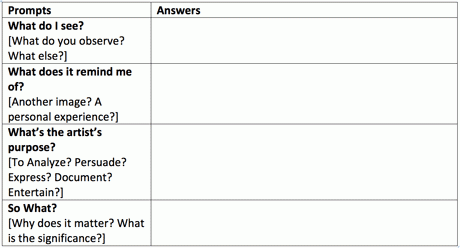
Activites in the Classroom
Four Corners:
How to: Label each corner of the room as a different topic, number or letter. Use each corner as a guide for students.
Uses:
Kindergarten: Math (Shapes) MAFS.K.G.1.2
Correctly name shapes regardless of their orientations or overall size.
Example: Teacher can place shapes in each corner of the classroom. They can be any shape, size and color. Variations of each shape are welcome. Teacher can describe the shape, and students will pick the corner where they think they can find that shape. In this case several corners may be correct. May vary by teacher.
First Grade: ELA LAFS.1.RL.2.4
Identify words and phrases in stories or poems that suggest feelings or appeal to the senses.
Example: Teacher could have each corner of the room become a different emotion. Teacher will have several short poems, phrases or stories that exert a certain emotion. Students will be asked, after the story is read, to choose the emotion they think best fits the story.
Second Grade: Science SC.2.L.14.1
Distinguish human body parts (brain, heart, lungs, stomach, muscles, and skeleton) and their basic functions.
Example: Teacher can give background knowledge on each of the main body parts, brain, heart, lungs, stomach, muscles, and skeleton. Teacher can label each corner of the room with one part of the body, and give a short explaination of one, and have the students pick the corner with the correct body part.
Third Grade: Math MAFS.3.NBT.1.1
Use place value understanding to round whole numbers to the nearest 10 or 100.
Example: Teacher can label the corners of the room, ones, tens, hundreds and not sure. The teacher then can call out, or write a number on the board and ask students where the number is rounded.
Fourth Grade: ELA LAFS.4.RL.2.5
Explain major differences between poems, drama, and prose, and refer to the structural elements of poems (e.g., verse, rhythm, meter) and drama (e.g., casts of characters, settings, descriptions, dialogue, stage directions) when writing or speaking about a text.
Example: Teacher can label each corner either, poem, drama, prose or not sure. TEacher then can read a short passage and ask students to identify it as one of the four. Teacher then can ask students that chose the right corner to explain why they chose the corner.
Visual Literacy Activites:
Visuals to use:
Activities:
-
Think Alouds
-
Visual Thinking Strategies
-
What's going on in this picture?
-
What do you see that makes you say that?
-
What more can we find?
-
-
Asking the 4Ws
-
Five Card Flickr
-
Give 5 photos:
-
Jot down one word that they associate with each image.
-
Identify a song that comes to mind for one or more of the images
-
Describe what all the images have in common.
-
Compare answers with classmates.
-
-
-
Image Analysis Worksheets
-
Photo Analysis
-
Cartoon Analysis
-
Motion Picture Analysis
-
Map Analysis
-
Poster Analysis
-
-
Step-by-Step: Working with Images That Matter
-
Literal observation
-
Interpretation
-
Evaluation/application
-
Memes
Multimodal Texts
Photos
Pictograms
Political cartoons
Signs
Slide shows
Storyboards
Symbols
Tables
Timelines
Videos
Websites
Advertisements
Cartoons
Charts
Collages
Comic books
Diagrams
Dioramas
DVDs
Graphic Novels
Graphs
Icons
Magazines
Maps






